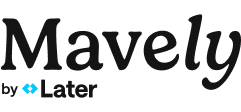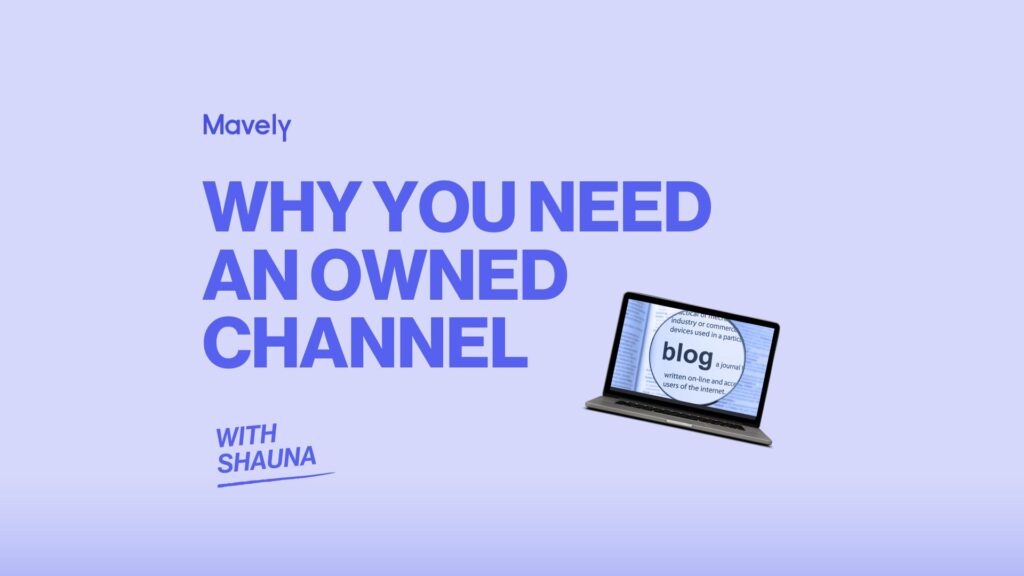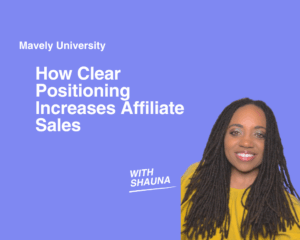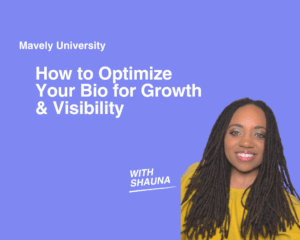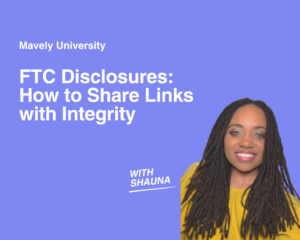There’s no question that modern-day influencing is driven by third-party social media platforms — and we’re grateful for it! But you put a lot of hard work into your posts and videos, and you deserve to be in control of your brand. We encourage you to go beyond social media with owned channels so you can build out your brand — on your own terms.
In this blog and video, you’ll learn:
- The risks of working exclusively on third-party platforms
- The importance of having owned channels
- Owned media examples to consider as an affiliate
Third-Party Platform Risks
Social media platforms make it easy to join, build a following, and meet your audience where they are. But no matter how successful you are, you’re always at the mercy of the platform and its respective policies. This could mean sudden algorithm shifts, rule changes, outside political threats, sudden group removals, suppressed views, or shadowbanning, all of which may threaten the hard work you’ve put into your accounts.
These third-party platforms are a big part of the influencer business, but it’s important to diversify your presence to optimize your visibility and take control of your burgeoning brand.
Why You Should Consider Owned Media
Owned channels play an important part in any multi-platform influencer approach. When you invest your time and energy into an owned media strategy, you’ll see it pay off in many ways:
- A stronger, more resilient brand,
- The potential for additional passive income,
- And the ability to engage with your audience however you want.
Owned Media Definition
So, what exactly do we mean by owned media or owned channels?
Owned channels refer to the digital platforms that give you full control of the content: You set the rules, manage the material, and engage directly with your audience without limitations. Owned media examples include blogs, websites, and newsletters or email lists.
Cons of Not Having Owned Channels
No matter which form of owned media you pursue, you’ll be building a sort of “home base” for your following and your affiliate links. When you rely on third-party social media channels and platforms without incorporating an owned media strategy, you may find yourself:
- Frustrated with unpredictable social media algorithms and limited reach
- Jeopardized by issues outside of your control
- Restrained by building your business on “land you don’t own”
- Unable to communicate directly with your audience
Benefits of Having Owned Media Channels
Diversifying your presence across multiple platforms — owned or otherwise — will help you improve your reach with different audiences and grow your brand. Owned channels are a helpful way to complement your third-party social media presence, build an archive of content with a longer lifespan, and establish rapport with your audiences the way you want to. Some of the many benefits include:
- Complete control over your content
- Freedom from platform changes and algorithm updates
- Visibility beyond social media
- Stronger audience relationships developed through email marketing
Carve Out Your Corner of the Web
Building a blog or website can lead to long-term earning potential. Evergreen content that’s been well-optimized for search terms like reviews, guides, or recommendations can bring in commissions for years after you publish it.
Mavely affiliate links are platform agnostic, which means you can share them anywhere — including your blog posts. The links stay active as long as your page is live, and with a little elbow grease, site maintenance, and some well-placed keywords, you can make your blog or website earn you passive income for a long time.
Getting Started with a Website or Blog
It’s easier than you think to start your owned media channels.
- Buy a domain from a source like Namecheap, Cloudflare, GoDaddy, etc. This is the URL or web address people will use and see in their web browser.
- Build your site using one of many template-based, user-friendly tools, such as WordPress, Squarespace, or Wix.
- Create valuable content designed for your target audience and embed your affiliate links within the content for ongoing earning potential.
How to Start Building an Email List
Communicating with your audience regularly through email is a fun way to keep them abreast of your recommendations and reviews in an easy-to-digest manner. Here’s how to get started:
- Find an email service provider (ESP). You can start for free with providers like ConvertKit or MailerLite, or look into paid options like Mailchimp, Constant Contact, or Klaviyo, among many others.
- Create a landing page, often free within the ESP you choose.
- Determine if you want to use a lead magnet, and designate what it will be. A lead magnet is an optional incentive for audience members to sign up for an email list, such as a cheat sheet, helpful guide, or free course.
- Incorporate your affiliate links in your emails and send them to your contacts.
Which Owned Channels Are Right for You?
There’s no wrong way to jump into your owned media strategy, but here are some tips:
- Developing and nurturing your email list is very important — we recommend starting with it.
- Think about what you want your domain name to be for your website or blog. Remember to make it memorable and/or related to your social media account.
- Brainstorm potential blog posts or emails you could create and how to add them into your content strategy. Making a content calendar can help you plan ahead and keep it timely.
- Research blogs from other creators that share your space to get inspiration, as well as an understanding of cadence and stand-out content.
Ready to Get Started?
With the powerful combination of social media, owned channels, and some hard work and strategic thinking, you can make your Mavely affiliate links go even further. Join today to start earning!
